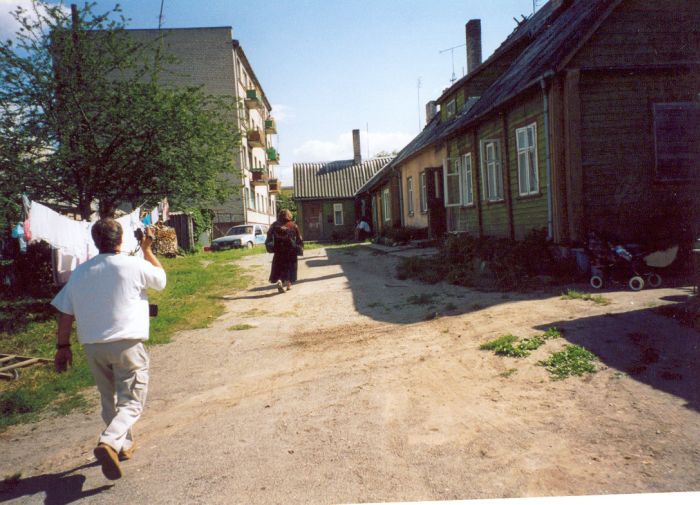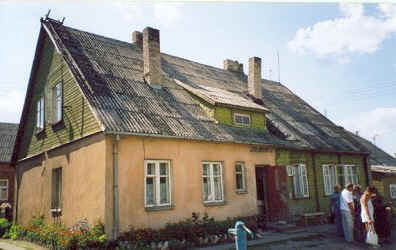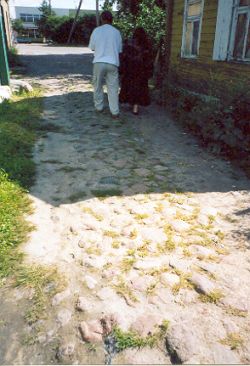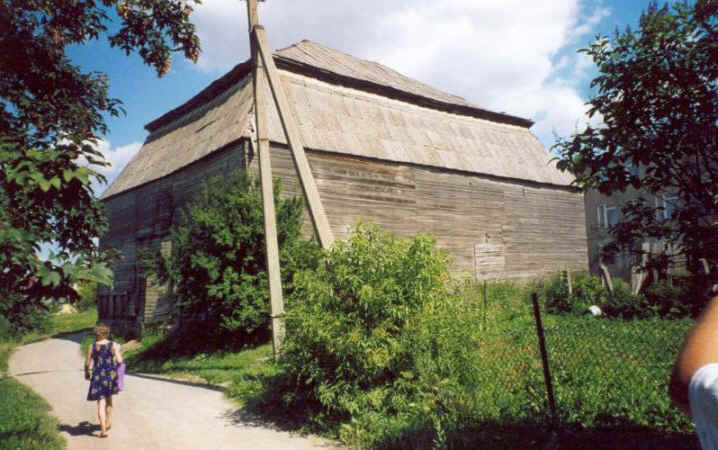The Jews then had to wear yellow stars. They were watched and guarded by the so called white arm banders *), all men belonging to the squad of Petras Pozela, formerly a lawyer. Members of his group were: Gigevičius, Simkevičius, Zinkevičius, Lipskis and Dojokas.
*)The white armbanders were the supporters of the Lithuanian Activist Front (LAF), a coalition of political parties established in Nazi Germany by Lithuanian emigres who were political leaders in their country who escaped to Nazi Germany when, or shortly after, the Soviet occupation of Lithuania on June 15, 1940.
The LAF was established with the blessing of the Nazis and under their aegis and the LAF in turn fully supported the Third Reich and their staunchly anti-Semitic agenda.
Prior to the Nazi invasion of Lithuania, the LAF sent messages into the country calling upon Lithuanians to "settle scores" with the Jews and which declared that the day of reckoning with Lithuanian Jewry was rapidly approaching and that the rights of residence in Lithuania granted to Jews by Gediminas (in the 14th century) would soon be repealed.
These exhortations found practical expression in a wave of violence launched against Lithuanian Jews in more than forty communities EVEN BEFORE the arrival of the German troops.
Following the invasion of the Wehrmacht, it was the white armbanders who in many locations carried out pogroms against the local Jews. Until the organization of the Lithuanian collaborators into organized units, which were initially called National Labour Defence Battalions and later Lithuanian Auxiliary Police Battalions, it was the white armbanders who were doing the persecution and murder.
These men were usually Lithuanian army veterans or members of the Sajunga, which was a rifle club.
source:Dr. Efraim Zuroff, Simon Wiesenthal Centre Jerusalem.
The Jewish men had to do forced labour on the estate of Baron von Ropp's son and
successor Julius. Then, on 31 July 1941, they had to assemble at the synagogue
from where they were taken on trucks to Morkakalnis,
about
One young man, the 19 year old Sheink, managed to escape, but some time later he was caught and shot.
Dr. Schreiber, his wife and two sons, 14 and 16 years old, remained alive after the massacre. The population of Pakroy and the surrounding villages needed his services. The Schreiber family continued to live in the shtetel for some time (a few months). When they were being led through the shtetel to be shot the unfortunate sons cried out to the bystanders to save them. The Schreibers too were shot in Morkakalnas.
The only Jews who were in Pakroy at the outset of the invasion and who were not murdered, was a group of about 30 young men who were arrested and taken to the Shavel Prison. Some of them survived the Shavel Ghetto and after its liquidation they were taken to Stuthoff and Dachau in Germany (for instance, Dovid Katz and Kalman Luria). Some survived –Dovid Katz came on aliya in 1948 after internment in an illegal immigrants camp in Cyprus; Kalman Luria came to South Africa in 1946 to his uncle and many years later came on aliya with his family.
Another group were members of a hachshara of the Polish Zionist youth movement, Hechalutz Hatzair, who fled Poland and after much wandering finally took refuge in Pakroy, actually living in the shul. They kept a kibbutz framework, doing agricultural work for local farmers. They too were removed to the Shavel Ghetto. One couple, Yellin, now live in Haifa.

Some of the Jewish men were shot across the new Jewish cemetery, on the
bank of the river Kruoja, at the road leading to the
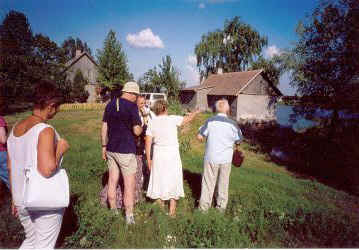
the bank
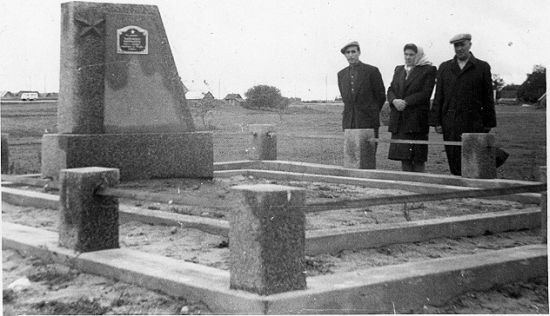
paid by Rivka Shapiro-Igdal and Israel Igdalski, Chana Shapiro-Burk, Rachel Sherman and William Sands. Rachmiel Rubenstein was responsible for the design and the erection of the memorial stone.

Early August, the Jewish women, children
and elderly people were forced to leave their houses and to settle in the
surroundings near the Kruoja. During the day they had to stay outside and during
the night they were locked in into the synagogue.
The photos below indicate where the women, children and elderly were kept
imprisoned.
